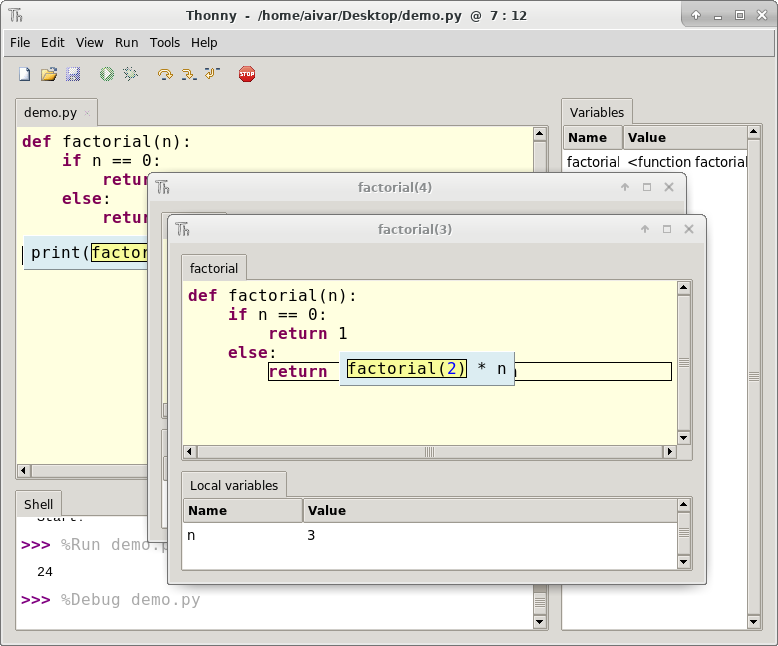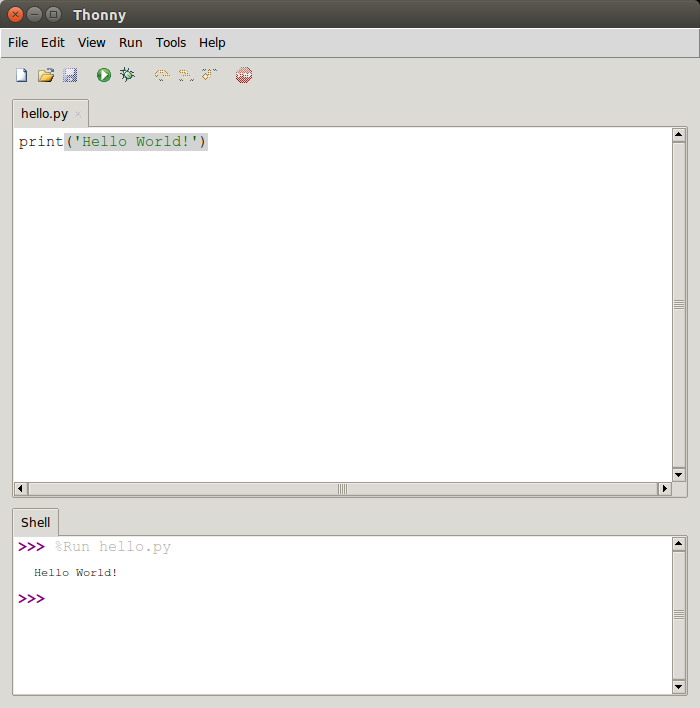
- Thonny ide online how to#
- Thonny ide online install#
- Thonny ide online software#
- Thonny ide online code#
Spyder uses Qt for its GUI and is designed to use either of the PyQt or PySide Python bindings. It is available cross-platform through Anaconda, on Windows, on macOS through MacPorts, and on major Linux distributions such as Arch Linux, Debian, Fedora, Gentoo Linux, openSUSE and Ubuntu.
Thonny ide online code#
Spyder is extensible with first-party and third-party plugins, includes support for interactive tools for data inspection and embeds Python-specific code quality assurance and introspection instruments, such as Pyflakes, Pylint and Rope. Initially created and developed by Pierre Raybaut in 2009, since 2012 Spyder has been maintained and continuously improved by a team of scientific Python developers and the community. Spyder integrates with a number of prominent packages in the scientific Python stack, including NumPy, SciPy, Matplotlib, pandas, IPython, SymPy and Cython, as well as other open-source software. There are plenty of other Python IDEs available for Linux.Spyder is an open-source cross-platform integrated development environment (IDE) for scientific programming in the Python language.
Thonny ide online install#
Once installed, you can search for it in the menu and install it from there. It downloads a bunch of dependencies and around 300 MB of packages.

On Debian and Ubuntu-based distributions, you can use the apt command to install it.
Thonny ide online software#
Just look for it in your system’s software center.Īlternatively, you can always use the package manager of your Linux distribution. It’s a popular application and you can find it in the repositories of most Linux distributions. It is available for Windows, macOS and Linux.
Thonny ide online how to#
Good enough features for learning Python, right? Let’s see how to install it. It opens a window and you can install Pip packages from this GUI. Please note that if you use Flatpak or Snap, Thonny may not be able to access the system shell. From here you can install new Python package or learn to handle Python from the command line. Access to system shellįrom the Tools, you can access the system shell. Thonny supports auto code completion which helps in coding faster. Local variables are also visually distinguished from globals. Thonny is points it out immediately in the editor itself. Super cool! Syntax error highlighterīeginners often make simple syntax errors like missing paranthesis, quotes etc. For function calls, it opens a new window with separate local variables table and code pointer. This is very helpful for new programmers to understand why their program is behaving in a certain manner. In small steps, you can see how Python sees your expressions. You can go into big steps with F6 or in small steps with F7. You don’t even need the breakpoints here.

You can access it from the top menu or use the Ctrl+F5 keys. Run your program step by step by using the debugger. See variablesįrom the View->Variables, you can see the values of all the variables. It gives you an editor where you can write your Python program and hit the Run button or use F5 key to play the program. That’s not a big deal for Linux users as most distributions have Python installed by default.

Thonny comes with Python so you don’t need to do additional effort for installing Python. I don’t code in Python so I never discovered it until recently.ĭedicated to Python, Thonny has features that help Python beginners understand how their program behaves. It has been on the horizon for some years now. And that’s not entirely a bad thing considering most C++ and Java beginners start with Eclipse and many stay with it afterward. Thonny feels like the Python version of Eclipse in terms of UI and UX. Thonny is a cross-platform, open source Python IDE for beginners I liked the idea of this application and hence I am sharing it with you here. I recently came across another IDE specifically crafted for Python beginners. The P圜harm community edition is available for Linux users.

There are several IDEs and text editors that can be used for Python development. Running a Python program in Linux is as simple as executing the Python file in the terminal.īut that’s not very convenient for everyone and it doesn’t help you debug your programs.


 0 kommentar(er)
0 kommentar(er)
